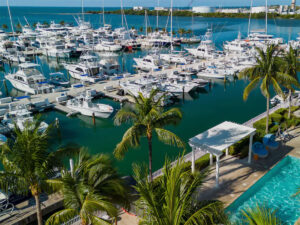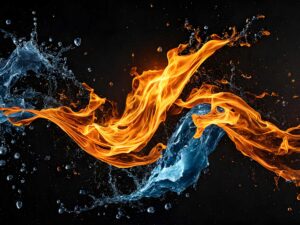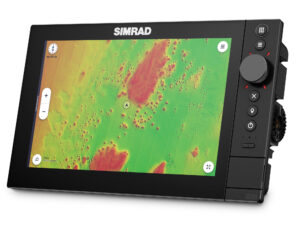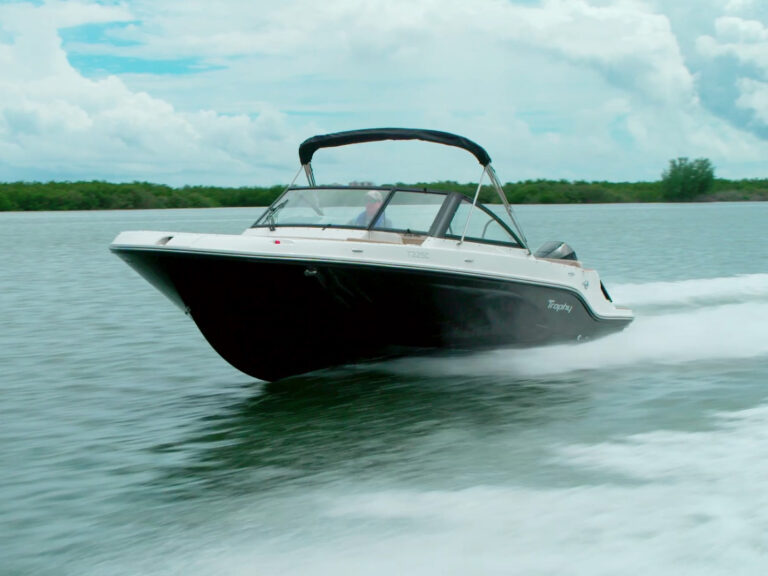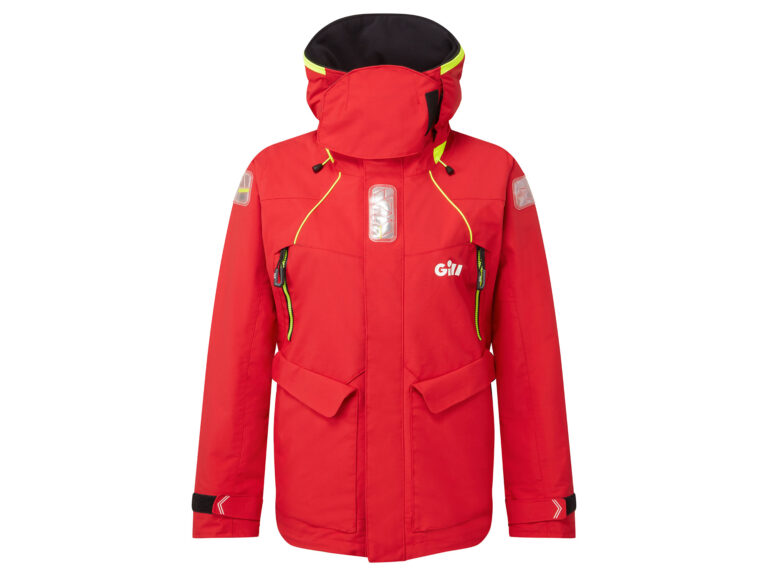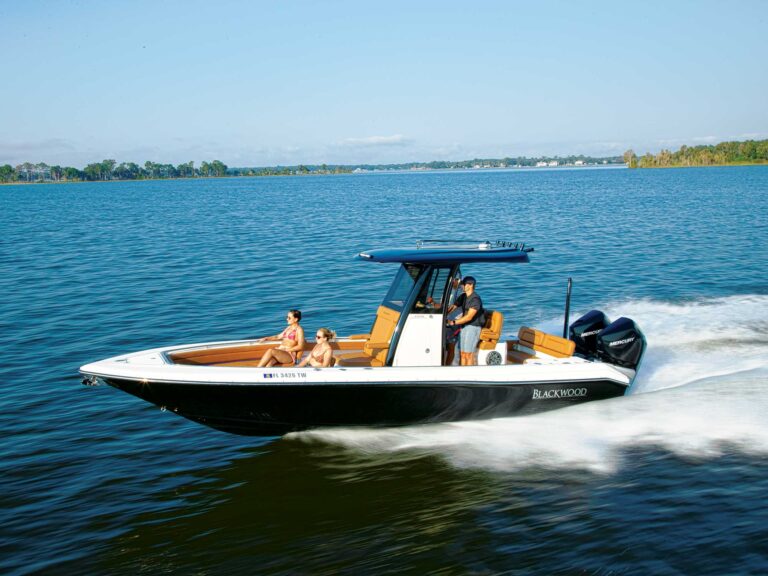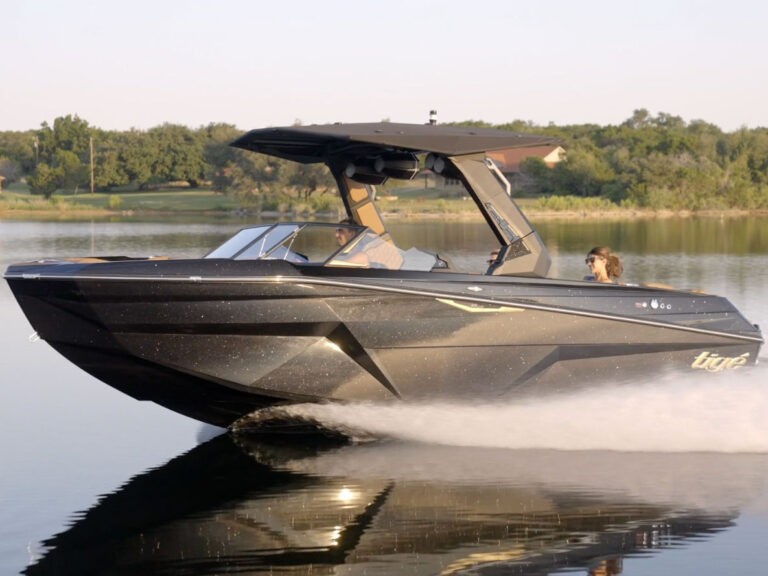
It’s boat-show season, and the pressing question is: How much horsepower should I buy for my new boat? For a generation, our expert opinion has always been to buy all the horsepower you can afford. Conventional wisdom holds that no boat owner ever wished for less horsepower. The control lever is not a light switch, and the captain can always throttle back to a slower, more economical speed.
We also know that conventional wisdom may no longer apply when circumstances change. Right now, outboard power is in style, and the technology and design details built into the latest engines have elevated every aspect of performance and economy. Which begs the question: Is upgrading horsepower still a smart investment for the family boat buyer?
To find out, we engaged a leading builder of family craft, Chaparral Boats, to provide us with a pair of 21 H2O Sport runabouts powered by two of the outboard engine options available for this model — the base Yamaha F150 and the $3,900 upgrade, a Yamaha F200. Our test boats were otherwise identically optioned. With as-tested options, dealer prep and shipping charges to Park Boat Company in Washington, North Carolina, the MSRP with the Yamaha F150 outboard came to $47,370. The Yamaha F200 pushed the MSRP up by about 8 percent, to $51,270. Since its introduction in 2017, 75 percent of 21 H20 Sport models have been sold with 150 horsepower on the transom. Which, of course, runs contrary to conventional wisdom. So, let’s crunch some numbers.

Yamaha Vs. Yamaha The Yamaha F150B and Yamaha F200B share a cowl, midsection and gear case, but the powerheads represent two generations of design. The 2.7-liter (2,670 cc) F150B was introduced in 2004 as the first four-cylinder, four-stroke outboard rated at 150 horsepower. An updated B version came in 2015 with a new cowl and improved clutch. Features include multiport fuel injection, a dual overhead camshaft (DOHC) cylinder head with four valves per cylinder, and a 9-to-1 compression ratio. Yamaha introduced the F200 model in 2013, so it benefits from 10 additional years of Yamaha engine design advancement. This 2.8-liter (2,785 cc) four-cylinder motor adds variable cam timing (VCT) on the intake camshaft to broaden the powerband and a 10.3-to-1 compression ratio for increased torque. It has a single throttle body on the front of the powerhead, and very long intake runners that wrap around the starboard-side of the engine to pack more air into the cylinders and improve throttle response. The F150 has four throttle bodies and much shorter runners. Both engines have a dry weight of 498 pounds. The F200 is offered in two versions — the B model for mechanical controls, and the C model for Yamaha Command Link digital electronic controls (DEC). The 2.7-liter F150B is only available with mechanical controls. Chaparral does not offer the 21 H2O Sport with digital controls, only mechanical controls.
Note two other key differences between the F150 and F200. Yamaha recommends 87-octane fuel for the F150 and 89-octane fuel for the F200. The engines have different gear ratios, 2.00-to-1 for the F150 and 1.86-to-1 for the F200. Both our test engines used the same propeller. Because it has a taller gear ratio, the F200 is always accomplishing a little more work — turning that prop a little faster — with every revolution of the engine.

Performance To make this more of a real-world deal, we conducted all of our testing with 488 pounds of shot-bag ballast in the boat — representing Uncle Bo, Aunt Bev and a kid — distributed with 188 pounds in the bow and 300 pounds in the aft cockpit. This in addition to our two-person test crew.
The F200-powered boat ran 48.8 mph, 3.5 mph faster than the F150 boat. The difference in the average time to plane was less than one second, 5.82 seconds for the F200 to 6.18 seconds for the F150. We could feel the difference in back-to-back runs, but the performance of the F150 was perfectly satisfactory.
It’s worth noting that we see many runabouts and deck boats offered with a broader range of outboard power. The Four Winns HD 200 OB, for example, is available with 115 hp, 150 hp, and 200 hp Yamaha and Mercury outboards, with the price escalating by $10,000 from the 115 to the 200 Yamaha. Chaparral has tested the 21 H2O Sport with a Yamaha F115 but felt the performance was lacking and so nixed that option. Performance is somewhat subjective, of course, but we think that often the least powerful engine option exists to create an enticing “as low as” price for marketing.

30 MPH: 5.8 gph/5.2 mpg
35 MPH: 7.7 gph/4.5 mpg
40 MPH: 11.2 gph/3.6 mpg
Most Efficient Cruise: 5.3 mpg at 3,500 rpm/26.9 mph
Wide-Open Throttle: 9.6 gph/2.5 mpg
Time to Plane: 5.82 sec.
Top Speed: 48.8 mph Courtesy Yamaha
Fuel Economy In our standard “best cruise” measure of fuel economy, the F200 is a surprising winner, delivering 29 percent more miles per gallon than the F150 at 3,500 rpm. At 5.1 gph, the F200 burned a little less fuel than the F150 (5.6 gph), and because of its taller gear ratio, it was running at 26.9 mph compared to 23 mph for the F150. More speed on less fuel sounds like a winning formula for the F200.
When we measured fuel use at three specific boat speeds — 30, 35 and 40 mph — the F200 achieved 13 to 29 percent better economy than the F150. But unless you are engaged in some speed-specific activity, like towing watersports, you are unlikely to throttle your boat to a specific speed; unlike an auto on the road, there’s usually no speed limit to guide us. Instead, we’ll throttle up to what sounds and feels like a fun, comfortable cruising speed. If it’s a nice day, that sweet spot in this boat will likely be about 4,500 rpm — the boat is solidly on plane and can take a lot of trim, and we are going fast enough to have fun and cover some distance without leaving passengers windblown or beat up. At 4,500 rpm, the F200 and F150 deliver almost the same fuel economy.
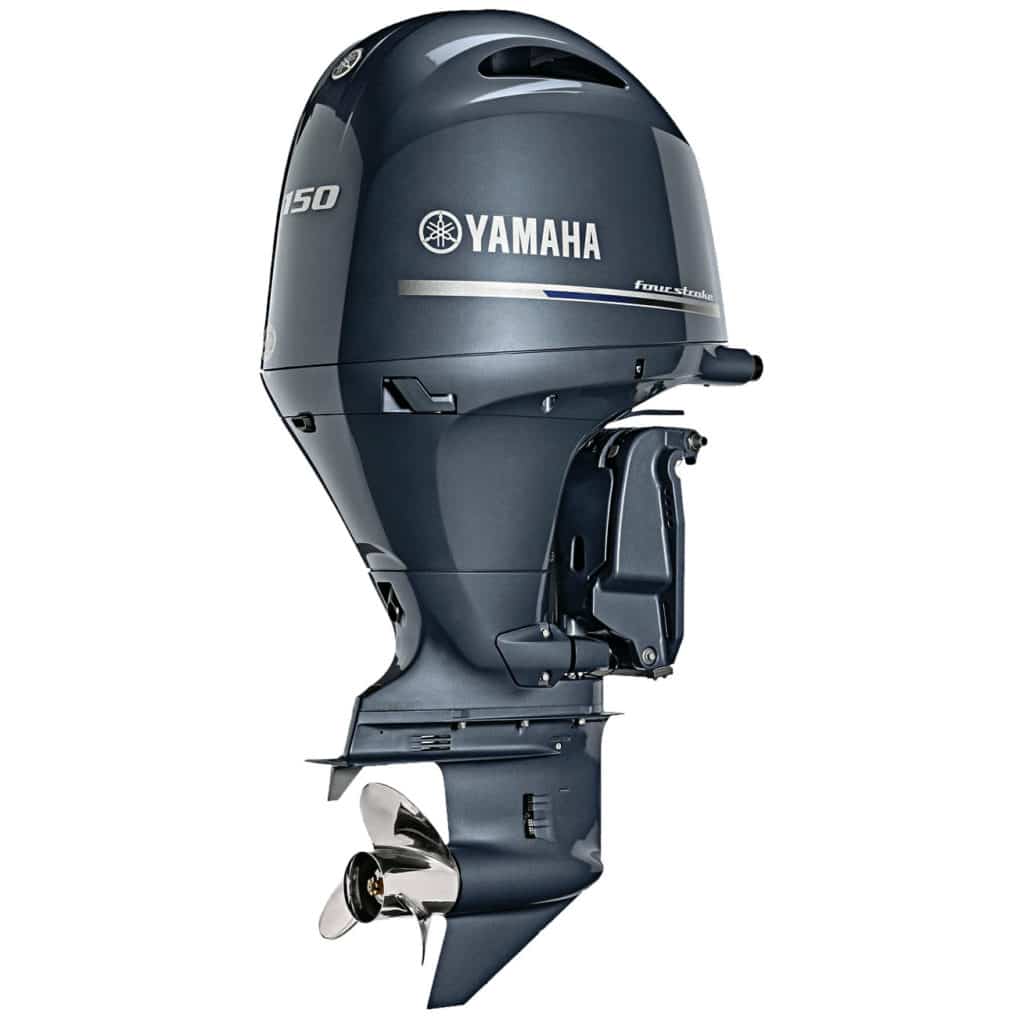
30 MPH: 7.9 gph/3.8 mpg
35 MPH: 9.5 gph/3.7 mpg
40 MPH: 12.6 gph/3.2 mpg
Most Efficient Cruise: 4.1 mpg at 3,500 rpm/23 mph
Wide-Open Throttle: 16.6 gph/2.7 mpg
Time to Plane: 6.18 sec.
Top Speed: 45.3 mph Courtesy Yamaha
For most family boat owners, however, considering fuel economy at cruising speed only covers part of a day on the water. Some time ago, the International Council of Marine Industry Associations (ICOMIA) endorsed a duty cycle for pleasure boats that was based on a behavioral study conducted by the University of Wisconsin that determined typical pleasure-boat use. This duty cycle was adopted for marine engine emissions testing. In the ICOMIA cycle, the boat is operated below 2,000 rpm 65 percent of the time it’s on the water, at what we would call cruising speeds 30 percent of the time, and at wide-open throttle only 6 percent of the time. If we plug the data from our tests of these two Chaparral boats into that duty cycle, we find that at the end of an hour of operation, the F150 has consumed 3.97 gallons of gas, while the F200 has consumed 4.15 gallons. Project that over a 40-hour boating season, and you’ll burn 7 fewer gallons of fuel with the F150. Big deal, right? Remember that you should be putting more-expensive 89-octane fuel in the F200, and in this example, that works out to a difference of $47 in the fuel bill for a season.
The bottom line: When propped correctly, an outboard that’s more powerful and has a more modern design is likely to deliver better economy at ideal cruising speed. But unless you spend a lot of time on each outing taking advantage of that economy, many seasons will pass before you break even on the initial cost of the outboard upgrade.

Cost of Ownership There’s nothing to be saved on service. The Yamaha F200 and F150 outboards have the same maintenance schedule and hold the same 4.5 liters of oil.
With typical financing (20 percent of MSRP down and 5.99 percent interest over 10 years), the F200 upgrade will add $34 to a monthly payment. To explore the impact of engine choice on resale value, we went to the dealer who ordered our test boats.

“The 21 H2O model is so new, we’ve only taken a couple on trade,” says Austin Smithwick, owner of Park Boat Company, “but when this model came out, I felt like the F150 was the right motor for the boat. If they offered it with a 115 and it was underpowered, I think that would detract from its value on trade-in.
“I have two customers who really want the F200 on this boat,” Smithwick says. “One is coming out of a sterndrive runabout, and is used to having 270 or 300 horsepower and just thinks he needs the 200 outboard. The other is a family planning to tow kids on one of those giant tubes, and in that case, the extra power is nice.”

Displacement: 2.7 liters | Gear Ratio: 2.00:1 | Prop: Yamaha Reliance 14.25″ x 18″ 3-Blade Stainless Steel | Fuel Load: 30 gal. | Boat Weight: 3,328 lb. | Ballast Weight: 488 lb. | Crew Weight: 370 lb. | Total Test Weight: 4,186 lb. How We Tested: Yamaha F200
Displacement: 2.8 liters | Gear Ratio: 1.86:1 | Prop: Yamaha Reliance 14.25″ x 18″ 3-Blade Stainless Steel | Fuel Load: 30 gal. | Boat Weight: 3,288 lb. | Ballast Weight: 488 lb. | Crew Weight: 370 lb. | Total Test Weight: 4,146 lb. Boating Magazine
In this segment, few boaters care about fuel economy, Smithwick contends, because they are not heading offshore for hours to fish. Sometimes the choice is psychological, he believes. “One customer does not want to break that $50,000 barrier by even a little, while another figures that if he’s spending this much money, he’s for sure getting the biggest motor. Half of the 21 H2O boats we sell get the F200,” Smithwick reveals.
Read Next: Outboard Ownership Costs
Analyzed financially, there’s practically no case to be made for paying $3,900 extra to power the Chaparral 21 H2O Sport with a Yamaha F200. If you agree, you are a pragmatist. But if you like extra frosting on your cupcake, then listen to your ego. And get the big motor.

